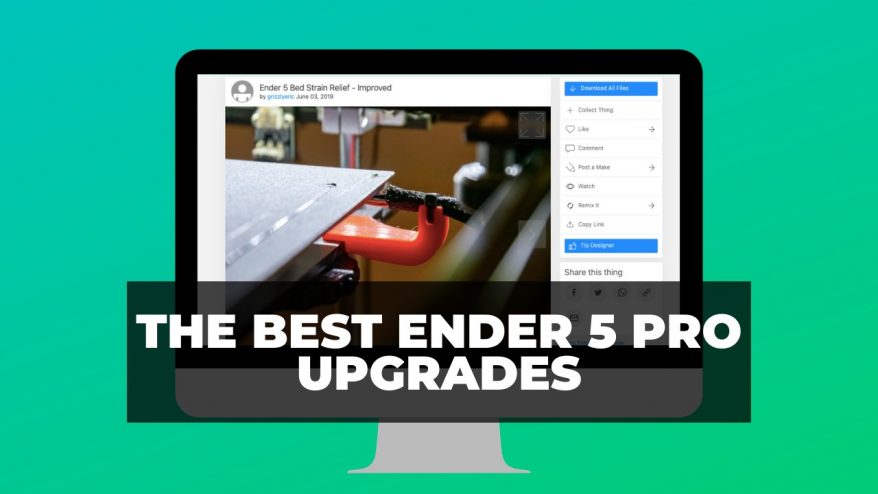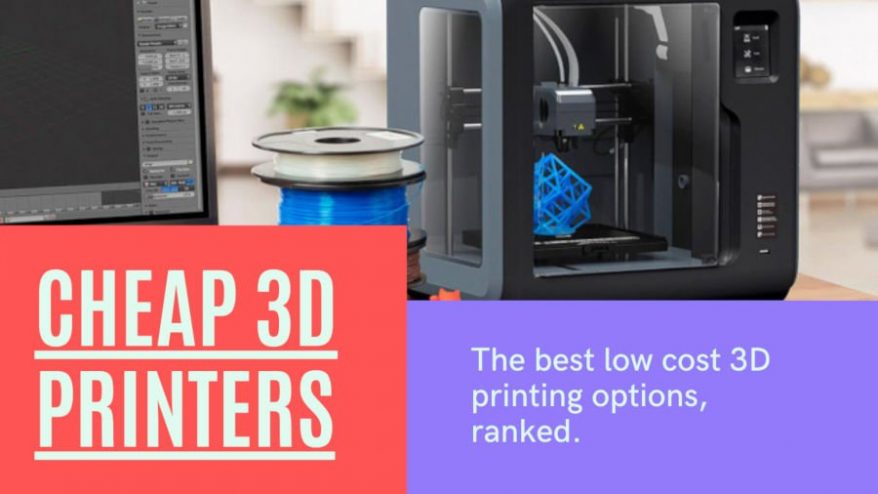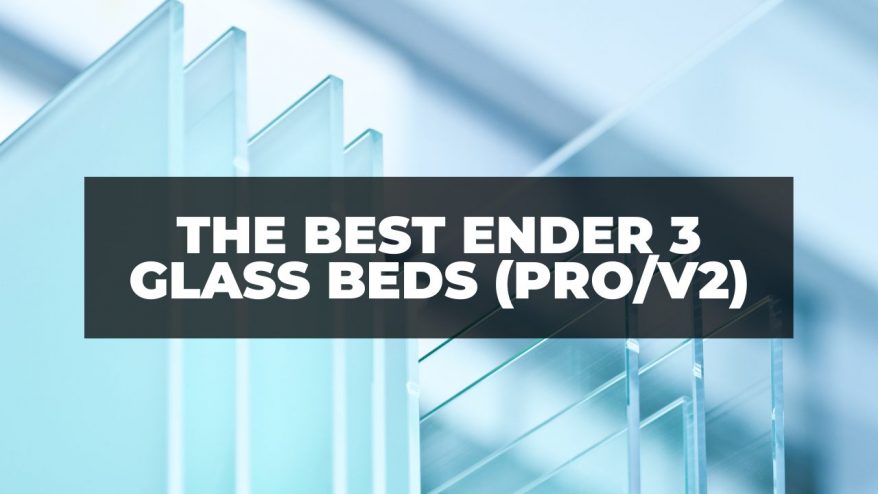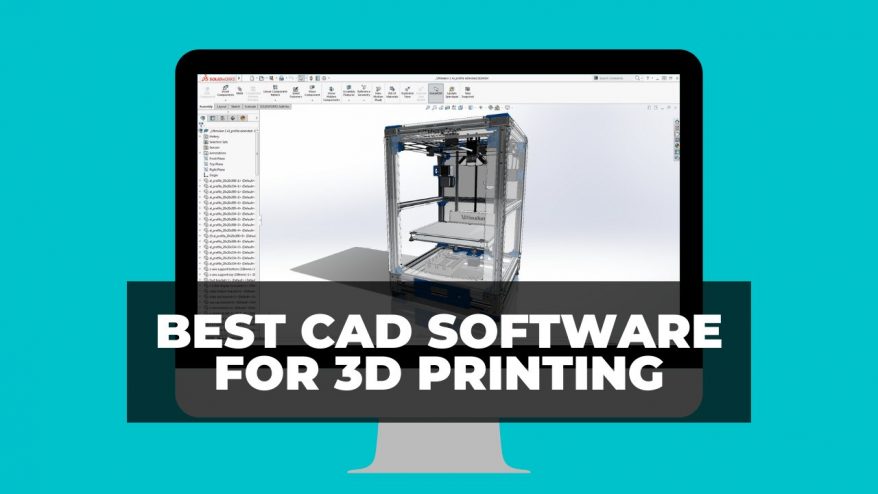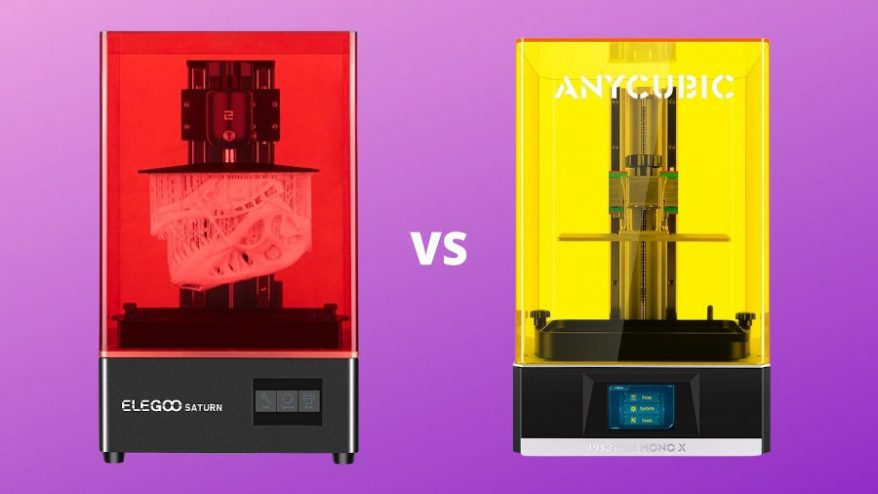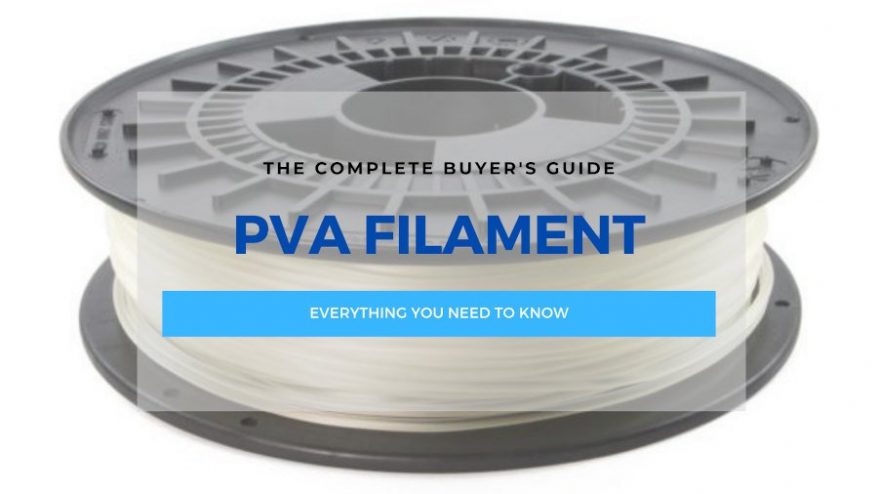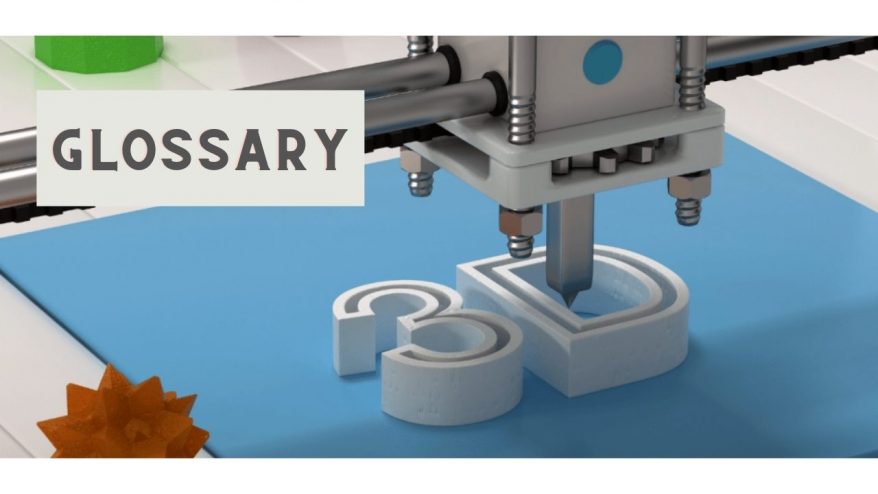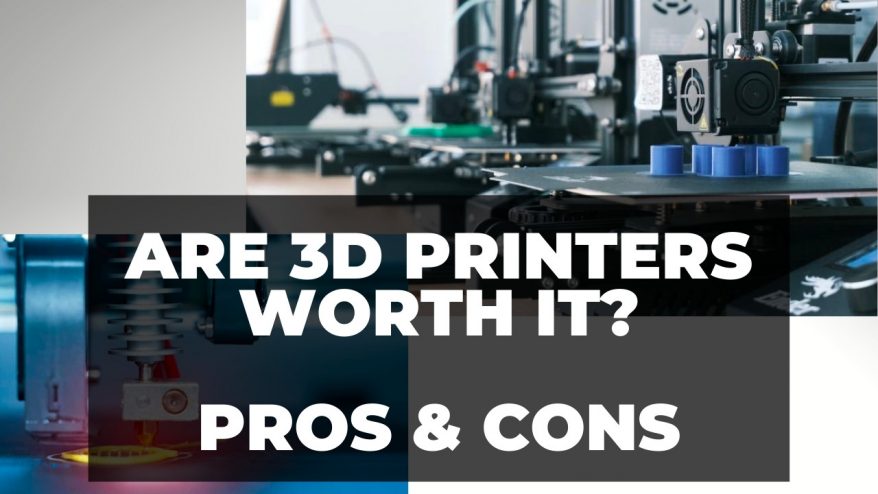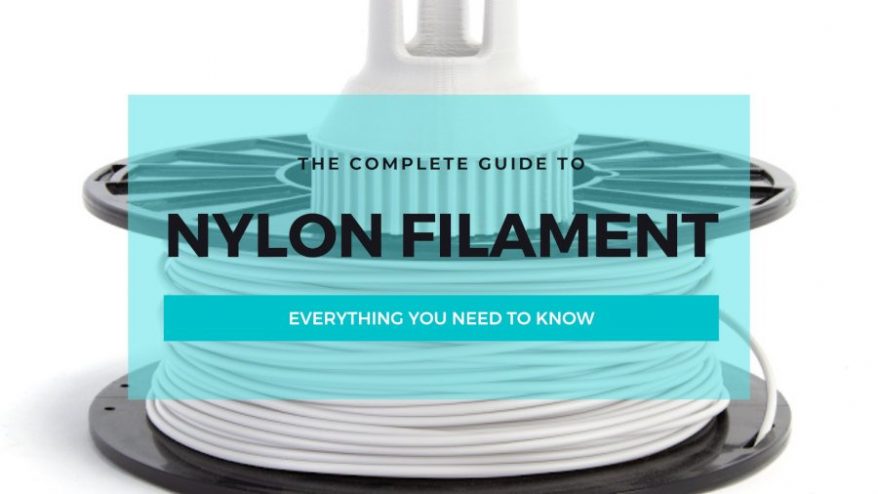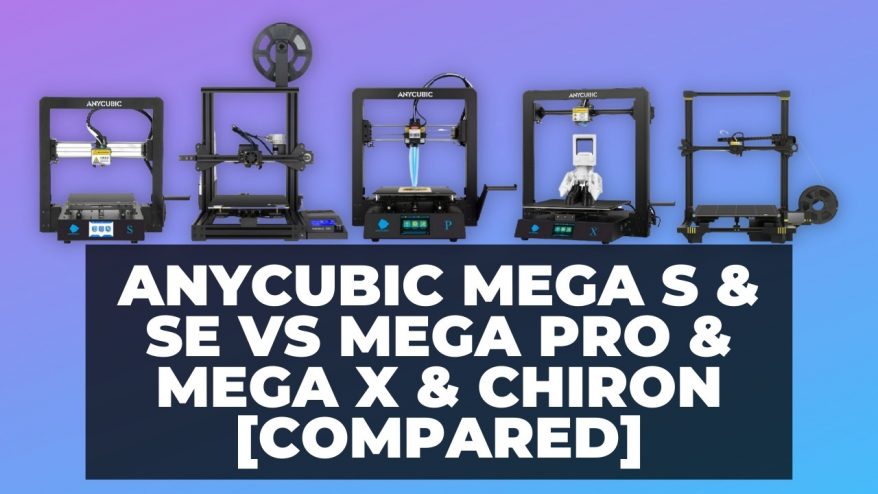
Anycubic Mega S & SE vs Mega Pro & Mega X & Chiron [Compared]


At 3DSourced we’ve covered everything 3D printing and 3D since 2017. Our team has interviewed the most innovative 3D printing experts, tested and reviewed more than 20 of the most popular 3D printers and 3D scanners to give our honest recommendations, and written more than 500 3D printing guides over the last 5 years.
With the launch of Kobra in 2022, Anycubic has cemented its position as one of the best purveyors of entry-level FDM printers, confidently rubbing shoulders with the likes of Creality and Voxelab.
While the Kobra certainly leads the charge, Anycubic’s back catalog holds a wealth of fantastic low-cost machines that are well worth a gander if you’re in the market for a new FDM printer. If anything, the fact they aren’t the fresh-faced debutantes they once were means you can snap one up at a bargain price.
Among them, we have the litter of Mega printers – the Anycubic Mega S, Mega SE, Mega Pro, and Mega X – and the large-format Anycubic Chiron. With only a handful of letters and a nod to Greek mythology to distinguish them, we’ve pieced together a comparison guide to help you find the best printer suited to you.
We have been lucky to test Anycubic’s more recent 3D printer releases, including the Anycubic Kobra and Vyper, but in this article, we’ll compare Anycubic’s older releases.
3DSourced is reader-supported. When you buy through links on our site, we may earn an affiliate commission. Learn more
Anycubic Mega S
- Price: Check latest price at Anycubic here / Amazon here
- Printing technology: FDM
- Build volume: 210 x 210 x 205 mm
- Filament compatibility: PLA, ABS, PETG, TPU
- Layer height: 100-400 microns
- Max nozzle temp: 275° C
- Max bed temp: 100°C
- Connectivity: USB, Micro SD Card
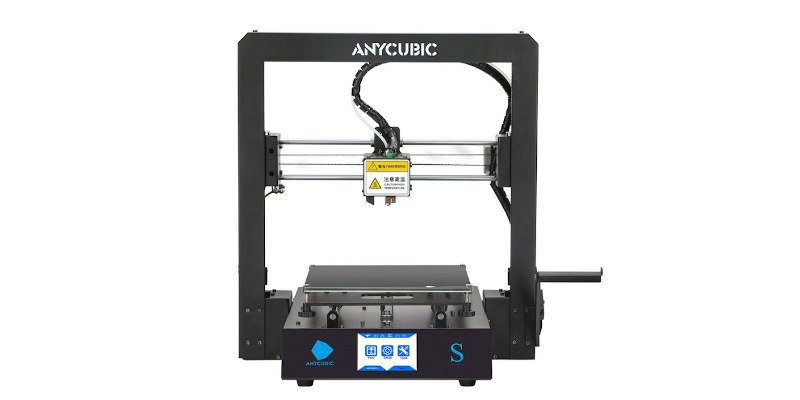
Pros
Sturdy and has a bit of heft to it to help reduce vibrations.
Handle flexibles nicely thanks to an extruder up to the task and good implementation of its Bowden setup.
Great for those starting 3D printing and on a budget.
Cons
A little restrictive for experienced makers.
Building on the success of the original Mega, the Anycubic Mega S welcomes first-time makers with open arms, and not just because of its enticingly affordable price tag.
A chunky, sturdy metal frame gives the Mega S a bit more heft than we typically find on the ultra-budget printers, namely the Ender 3, which helps reduce vibrations and wobble issues as the print head climbs up to the build volume’s upper reaches.
And, with a 210 x 210 x 205 mm build capacity, the Mega S accommodates all those beginner favorites, from small household parts to models of everyone’s favorite pop-cultural icons.
While many low-cost printers list compatibility with flexibles, performance doesn’t always match the marketing. However, the Mega S bucks the trend, handily printing ABS, PLA, PETG, and TPU thanks to an extruder up to the task and good implementation of its Bowden setup.
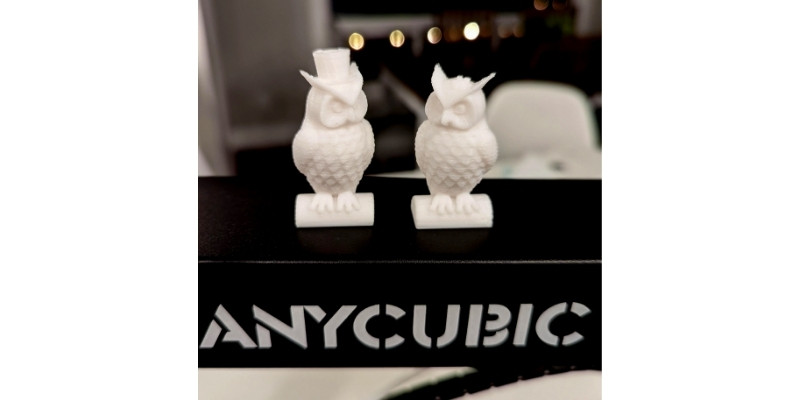
Regardless of material, there’s a sense the Mega S punches well above its price with impressive print quality with minimal tuning.
Other notable features include one of Anycubic’s Ultrabase build plates, designed for hassle-free first-layer adhesion and easy print removal. A filament run-out sensor, resume power, side-mounted spool holder, and one of the better examples of a touchscreen on a budget printer – responsive controls and good-sized LCD – round off what the Mega S offers.
If you’re looking for a cheap and easy start in 3D printing, the Anycubic Mega S is a perfect package. Easy to assemble and enjoyable to use, it’s a more than viable alternative to the likes of the Ender 3 or Voxelab Aquila. Experienced makers already possessing a printer or two may find the Anycubic Mega S a little too restrictive, especially the build volume.
Anycubic Mega SE
- Price: Check latest price at Anycubic here
- Printing technology: FDM
- Build volume: 220 x 220 x 250 mm
- Filament compatibility: PLA, ABS, PETG, TPU
- Layer height: 50-300 microns
- Max nozzle temp: 255°
- Max bed temp: 100°
- Connectivity: USB, Micro SD Card

Pros
Sturdy frame and dead simple assembly.
Increased build volume.
Double-gear extrusion mechanism, bonafide Capricorn Bowden tubing, and a faster heating bed than the Mega S.
Cons
Feels like a half-baked attempt to try something new.
The design isn’t as great as the Mega S.
With the Mega SE, Anycubic decided to take a different route, swapping out the tried and tested chunky frame design for a more classic, presumably Ender 3-inspired, design. That said, the result is much the same – a sturdy frame and dead simple assembly, albeit with a less striking design.
The redesign allowed Anycubic to increase the build volume to a more generous 210 x 210 x 205 mm, which opens the door to slightly larger prints, a great feature if the Mega S’ capacity is likely to limit your creativity. Fortunately, the excellent Ultrabase build platform returns.
Anycubic also opted to do away with the Mega’s solid, convenient touch screen interface for a dial knob alternative mounted to the side of the printer. While personal preference has a part to play, the old-style display feels like a step backward – most modern printers have done away with those tedious, dual-tone displays.
Where the SE does chart new ground compared to its predecessor is with the inclusion of a double gear extrusion mechanism, bonafide Capricon Bowden tubing, and a faster heating bed.
The Anycubic Mega SE bears some curious design choices for all its affordability. For example, the placement of the spool holder above the gantry; something that makes sense on a direct drive extruder but isn’t optimal for Bowden systems where the filament enters the extruder from the side.
Overall, the Anycubic Mega SE feels like a half-baked attempt to try something new, which is likely why Anycubic has discontinued the printer. The slight build volume increase and a spattering of improvements don’t amount to enough to see us recommend the SE over the Mega S.
Anycubic Mega Pro
- Price: Check latest price at Anycubic here / Amazon here
- Printing technology: FDM
- Build volume: 210 x 210 x 205 mm
- Filament compatibility: PLA, ABS, PETG, TPU
- Layer height: 50-300 microns
- Max nozzle temp: 260°C
- Max bed temp: 100°C
- Connectivity: USB, Micro SD Card
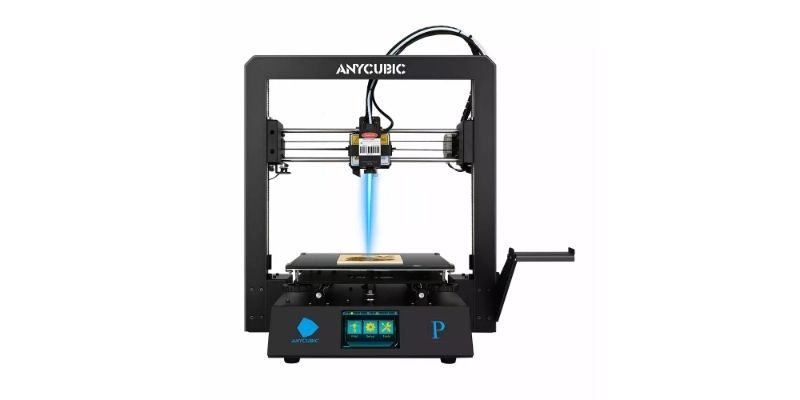
Pros
2-in-1 machine with a hot-swappable laser engraving attachment.
Some nice new features are included that aren’t in the Mega S.
Great price.
Cons
The Touchscreen interface looks a little outdated.
The Anycubic Mega Pro tilts towards being far more than a well-priced FDM printer thanks to a clever little twist that makes it stand out not just among its Mega peers but competing machines, too. It’s a 2-in-1 machine with a hot-swappable laser engraving attachment.
This addition could easily be passed off as a gimmick, but, in this case, the engraving head is comparable to what you’d find on similar budget standalone laser engravers. The printer pumps out good quality engravings on got-to woods like basswood, though it’s not quite powerful enough for cutting. You wouldn’t want the laser scarring the build platform, so this is hardly a negative.

If that doesn’t take your fancy, the Anycubic Mega Pro is still a potent printer that channels previous Mega machines. The same blocky frame makes a welcome return after the Mega SE experiment, as does the side-mounted spool holder.
In many ways, it bears all the same features as the Mega S, including build volume, dual gear extruder, and Ultrabase print bed. But, it also throws in a few extra comforts, such as a print pause feature, a smart auxiliary leveling module, a more precise 50-micron minimum layer height, and chunkier leveling knobs for a more complete printing experience.
In action, the Anycubic Mega Pro delivers consistent and impressive print quality for the price. There’s very little it can’t do with some software tuning.
It’s usually priced at $349.00, but given the arrival of newer Anycubic printers, you’ll often find it available for as low as $250. That’s a serious bargain if you were getting the printer alone. Throw in the laser engraving, and it’s frankly a steal. An entry-level engraver typically sets you back at $200 to $300.
Anycubic Mega X
- Price: Check latest price at Anycubic here / Amazon here
- Printing technology: FDM
- Build volume: 300 x 300 305 mm
- Filament compatibility: PLA, ABS, PETG, TPU
- Layer height: 50-300 microns
- Max nozzle temp: 250°C
- Max bed temp: 90°C
- Connectivity: USB, Micro SD Card

Pros
Large build volume for more capacity versatility.
An affordable alternative to the Mega S for those who want to tackle larger projects.
Cons
Paying more for a lot of the same specs as the Mega S (Although this is much larger).
At the top of the Mega pricing ladder, we have the giant Anycubic Mega X. Anycubic appears to have taken all the best improvements seen in previous models and condensed them into the same, albeit larger, chunky metal frame and sturdy chassis.
The headline is the larger build volume, which stretches to a sizable 300 x 300 305 mm, delivering more capacity versatility than the comparatively dingy Mega S. We’re nearing large-format 3D printer territory, but with a price tag that remains just about affordable, especially as sales shaving the price down to $260 or so are common.
The Ultrabase build plate, dual-gear extruder, and larger leveling knobs make a welcome return, sided by a few Mega X-specific enhancements. There’s a dual screw rod, a more powerful power supply, and a dual-rail design on the Y-axis, all to support the larger build volume, keep unwanted movement and wobble to a minimum, and continue the Mega’s tradition of solid quality prints.

Elsewhere, the Mega X specifications match the Mega S, except for a few tweaks to extruder and bed temperature, a consequence of the larger build volume. Much like the Mega S, it’s easy to set up, and it’s one of the more visually appealing printers on the market today, courtesy of sleek paneling and everything-housed-inside design choice on Anycubic’s part.
The Anycubic Mega X is an affordable alternative to the Mega S for makers who want to tackle those bigger projects.
Anycubic Chiron
- Price: Check latest price at Anycubic here / Amazon here
- Printing technology: FDM
- Build volume: 400 x 400 x 450 mm
- Filament compatibility: PLA, ABS, PETG, TPU
- Layer height: 50-300 microns
- Max nozzle temp: 260°
- Max bed temp: 100°
- Connectivity: USB, Micro SD Card
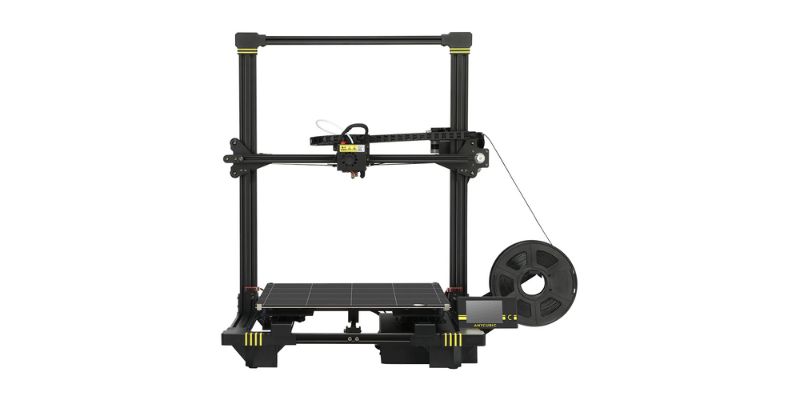
Pros
Hulking build volume.
Boasts a superb Ultrabase Pro glass build plate.
Capable of good quality prints.
Cons
Starting to show its age.
The touted automatic bed leveling is anything but, instead, a glorified manual bed leveling setup.
The Anycubic Chiron’s launch was a messy affair. Bad reviews and delivery of consumer models dripping quality control woes saw Anycubic shelve the printer shortly after that. It returned better than ever and slowly went about ingratiating itself to scorned makers, finally delivering on the promise of rivaling the beastly CR-10.
Now-ironed out Issues aside, the Anycubic Chiron has lots to offer makers looking for a printer to bring their most ambitious projects to life. A hulking 400 x 400 x 450 mm build volume delivers enough capacity to print complete helmets in one piece, cosplay props, busts, tabletop gaming terrain, and decorative figurines up to 45 cm in height.
Elsewhere, the Anycubic Chiron broadly boasts a superb Ultrabase Pro glass build plate with the company’s signature ultra-adhesive microporous coating. The platform is designed to latch onto all supported materials with little fuss when hot but releases them just as easily when cool. It’s a best of both worlds solution that removes the need to wrestle with glue to get a print to stick.
For all its big print merits, the Anycubic Chiron isn’t without its downsides. First and foremost, the touted automatic bed leveling is anything but, instead, a glorified manual bed leveling setup. Though it probes 25 different points on the bed, it fails to incorporate these into the printing process.
Worse, the Chiron can’t print with the probe attached to the printer. In practice, using the probe ends up being more hassle than manually leveling the bed from the get-go, which you’ll have to do with the bed anyway.
The Anycubic Chiron is also starting to show its age, lacking many of the comforts we’ve come to expect from similarly affordable large-format printers in subsequent years, including the excellent Mega X.

Furthermore, though the Anycubic Chiron is capable of good quality prints, it doesn’t make it easy to achieve them. Involved slicer setting experimentation and constant bed tweaks don’t make it as user-friendly as some of Anycubic’s Mega bunch.
Nevertheless, it’s often heavily discounted (as low as $350 at times). If you’re an experienced tinkerer with an appetite for a massive build volume and don’t mind tweaking your way to good quality prints, then the Anycubic Chiron is worth buying. It’s especially appealing if the Mega X’s 300 x 300 305 mm doesn’t quite hit the capacity you need for the largest projects.
Anycubic Mega S vs SE vs Mega Pro vs Mega X vs Chiron – 3D Printers Compared Summary
Although the Anycubic Kobra outclasses the Anycubic Mega S in virtually every way, this compact, well-built printer can still be a potent starter printer. The company regularly drops the price as low as $170, which is excellent value given the print quality and features.
- Mega S: Available here
We suggest avoiding the Mega SE entirely. The pivot to a different frame design abandons one of the Mega lineup’s best features – a sturdy frame and chassis – for a printer that isn’t quite up to par. We recommend sticking with the Mega S for the better design and lower cost.
The same goes for the Anycubic Chiron: the massive build volume doesn’t make up for the aging tech, poor bed leveling, and a tinker-heavy experience. There are plenty of large format printer alternatives out there that have the modern comforts that Chiron doesn’t such as the freshly-launched Anycubic Kobra Plus and Max.
As for the Mega Pro, the question is whether the laser engrave add-on will prove useful. If so, then it’s a solid printer that delivers everything we like about the Mega range and a solid engraving experience alongside.
- Mega Pro: Available here
Last but not least, The Anycubic Mega X should suit beginners looking for a user-friendly, super-sized intro to 3D printers just as well as experienced hobbyists looking to replace a smaller printer with a reliable workhorse without breaking the bank.
- Mega X: Available here
Related articles:



